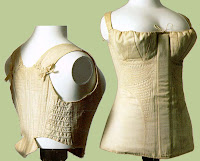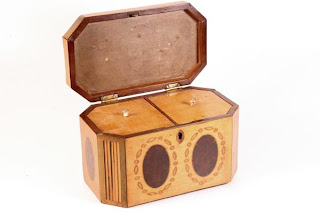 Now stir the fires, and close the shutters fast,
Now stir the fires, and close the shutters fast,Let fall the curtains, wheel the sofa round
And while the bubbling and loud-hissing urn
Throws up a steamy column, and the cups
That cheer but not inebriate, wait on each,
So let us welcome peaceful evening in.
My characters and I have this in common–we swill tea. I thought I’d try and explain why tea is so important to the English–there’s even an official website, http://www.tea.co.uk which has some fascinating stuff on modern tea drinking, like how to judge your boss from the way they hold their teacup, celebrity teacup designs, and the official Brit medical establishment’s view on tea drinking (it’s good for you! Ha! It contains antioxidants!). And in regencies, it’s always the stuff from China and India, with milk and sugar, none of those nasty herbal medicines, thank you. Why the milk? I’m not sure. One theory is that early English manufacturers couldn’t make a porcelain cup that would stand up to the temperature of the tea, so the milk was there to cool it down. Considering that even the most clunky of stoneware has to fire at about 1200F I think this is unlikely–unless the china was cracked to begin with. It tastes better that way, so I guess that’s how it came about (oops, some milk spilled in my tea but I’ll drink it anyway).

First, the pics. Top left, a Spode teapot with a floral pattern and gold wotsits from the early nineteenth century. Left, a tea caddy from about 1820, made with mahogany and rosewood veneers, two compartments for different sorts of tea, and a glass mixing bowl in the middle. This sort of caddy was used in the drawing-room for the elegant hostess to mix her own, and expensive tea blend. Lower left, an eighteenth-century China import teapot.
 Tea was discovered by accident (oops, a leaf fell in my cup, I think I’ll drink it anyway) by Shen Nung, Chineses scholar and herbalist in 2737 BC. By the Tang dynasty (618-906 AD) ch’a was China’s national drink. It caught on in India and came to Europe in the sixteenth century, and to the coffeehouses of London in the mid-seventeenth. Catherine of Braganza supposedly brought a gift of tea from Portugal for her husband-to-be Charles II. At any rate, by
Tea was discovered by accident (oops, a leaf fell in my cup, I think I’ll drink it anyway) by Shen Nung, Chineses scholar and herbalist in 2737 BC. By the Tang dynasty (618-906 AD) ch’a was China’s national drink. It caught on in India and came to Europe in the sixteenth century, and to the coffeehouses of London in the mid-seventeenth. Catherine of Braganza supposedly brought a gift of tea from Portugal for her husband-to-be Charles II. At any rate, by
1660, London merchant Thomas Garway issued a broadsheet selling tea for sale at £6 and £10 per pound. Garway claimed tea was “wholesome, preserving perfect health until extreme old age, good for clearing the sight,” able to cure “gripping of the guts, cold, dropsies, scurveys” and claiming that “it could make the body active and lusty.” Within a hundred years tea was widespread in England, supplanting beer as the drink of choice, and served in coffeehouses and pleasure gardens like Vauxhall and Ranelagh.
When the main meal of the day moved from midday to the evening fashionable hostesses served tea with snacks such as cakes, sandwiches, and nuts to tide themselves over until dinnertime. I’ve read this was attributed to Anna, seventh Duchess of Bedford in around 1840, which sounds extremely late. At the other end of the social spectrum, from about 1740 to 1820, workers on farms and in factories defended their right to tea breaks, to the fury of industrialists, landowners and clerics who asserted the habit encouraged indolence and cut down on productivity. Tea drinking, because it requires boiling water, is also thought to have reduced mortality rates among the poor in cities.
Later on tea was championed by the teetotal movement, and with the opening of teahouses in the 1860s, furthered the feminist movement in providing gathering places for unescorted women. High tea developed as an evening meal among poor and middle-class families, who still had their main meal at midday, and included somewhat more substantial fare than the afternoon tea of the aristocracy. In our house it could include sardines, boiled eggs, sticks of celery, sandwiches, scones, and something my mother called Scotch pancakes (a sort of griddle cake).
Any more tea myths or facts? Favorite teas? I’ll have a nice cup of Assam now…
Janet




